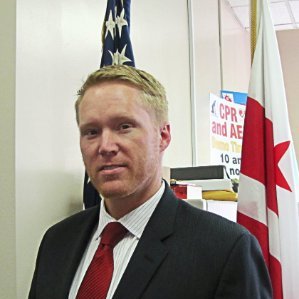Train derailment highlights need for better IT collaboration among feds, local governments
Ed Leonard, the Washington D.C. Fire and EMS Agency chief information officer, said when a recent CSX train went off track, the lack of interoperability hampered...
When a CSX freight train derailed in May in Washington, the ability of the D.C. government emergency services command bus to collaborate more effectively with their counterparts from the federal government faced a huge, but simple hurdle: A spreadsheet.
Ed Leonard, the Washington D.C. Fire and EMS Agency chief information officer, said the command bus didn’t have Microsoft’s Excel software on its computers. The emergency responders were using Excel to track the response to each separate rail car.
“That was definitely a lesson learned about collaboration and making sure we have the right software in place before something happens,” Leonard said. “The IT office has to make sure that tools we are using for the interaction are working for the special operations division or whoever is interacting with those agencies.”

Leonard said while the lack of Excel didn’t have a huge impact overall, he knows that type of situation can’t happen again as the collaboration among federal, state and local agencies continues to increase.
The DC Fire and EMS Agency works closely with federal agencies during large events in Washington such as World Bank meetings, parades or protests.
“We also have a fire operations center we recently renovated, and often representatives from federal agencies will come in that and work from there when we have a big event,” said Leonard, who has been the CIO since 2010.
Leonard said most of the time it’s a basic interoperability challenges versus the need to have technology standards or agreements.
He said as more events happen and the need to increase security continues to rise, establishing a stronger relationship with his federal counterparts is high on his agenda.
“There are a lot of times we do collaborate with federal agencies such as FEMA or National Park Service. A lot of that is with data sharing, especially with geospatial information system layers,” Leonard said.
The GIS layers are important for the emergency responders whether it’s responding to a fire—or recently—the Fire and EMS Agency wanted to get the layer for all the water mains across the city.
Along with the technology collaboration, the DC government can rely on some federal contracts.
Leonard said he works with the DC government’s office of contracting to buy products and services from the schedules run by the General Services Administration when appropriate.
Leonard also has a host of other IT priorities beyond working more closely with his federal partners.
He said there are several projects his office is trying to wrap up by Sept. 30.
The main one is an enterprise fire reports tracking system that also feeds information back to the National Fire Incident Reporting System.
“We have a system currently in place that hasn’t been upgraded for a couple of years. The complication that we’ve had is it continually loses its connection to the 911 database. We’ve had some difficulty figuring out where the connection is breaking and it causes our end users or fire responders not to be able to complete their reports,” he said. “We’ve tried to fix that a number of different ways, but the contract expired and we decided to go out and get something new.”
This system is critical for people who are victims of a fire because insurance companies will not start to process a claim until that report is completed.
Leonard said new system will have a web interface and a modern look and feel.
“We will be issuing out tables with SIM cards so they can be used out in the field,” he said. “There are a couple of different modules in the software. The main one is for the fire reporting, which happens after they put out the fire. They tell you what they found on the scene, how many floors were impacted and those kinds of things. The second module would be the one in which the officer in charge on the scene would be able to pull in the maps from Department of Consumer and Regulatory Affairs and see the floor plans of that building and move around the staff where they are at as part of keeping situational awareness.”
Along with the new system, Leonard said he wants to create a digital sandbox to let officers use the tools, including pulling GIS map layers, during a fire in a secure place online.
Another priority is upgrading the agency’s Intranet to improve collaboration and communication among employees.
“Since most of our workforce is mobile and 1,600 of our employees only work every four days, we are trying to make it available outside of our firewall,” Leonard said. “We have a lot of paper documents that we are trying to digitize and the idea is that the Intranet would be the repository for that. So if we go through all the work to digitize these documents, we want to make sure we get really good search results. I think we spent two weeks just trying to document that out.”
Copyright © 2025 Federal News Network. All rights reserved. This website is not intended for users located within the European Economic Area.
Jason Miller is executive editor of Federal News Network and directs news coverage on the people, policy and programs of the federal government.
Follow @jmillerWFED





